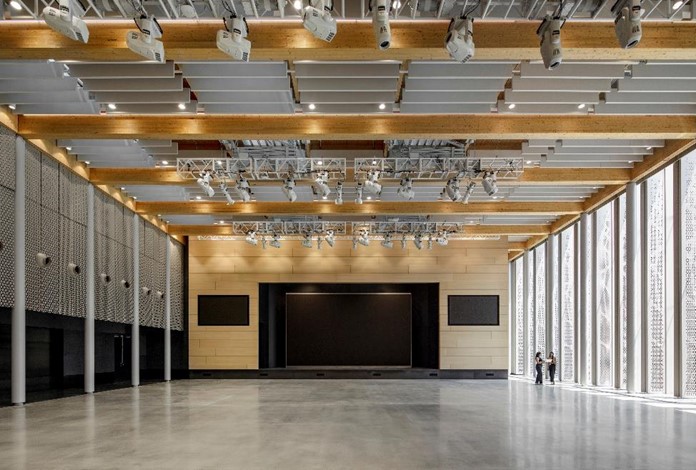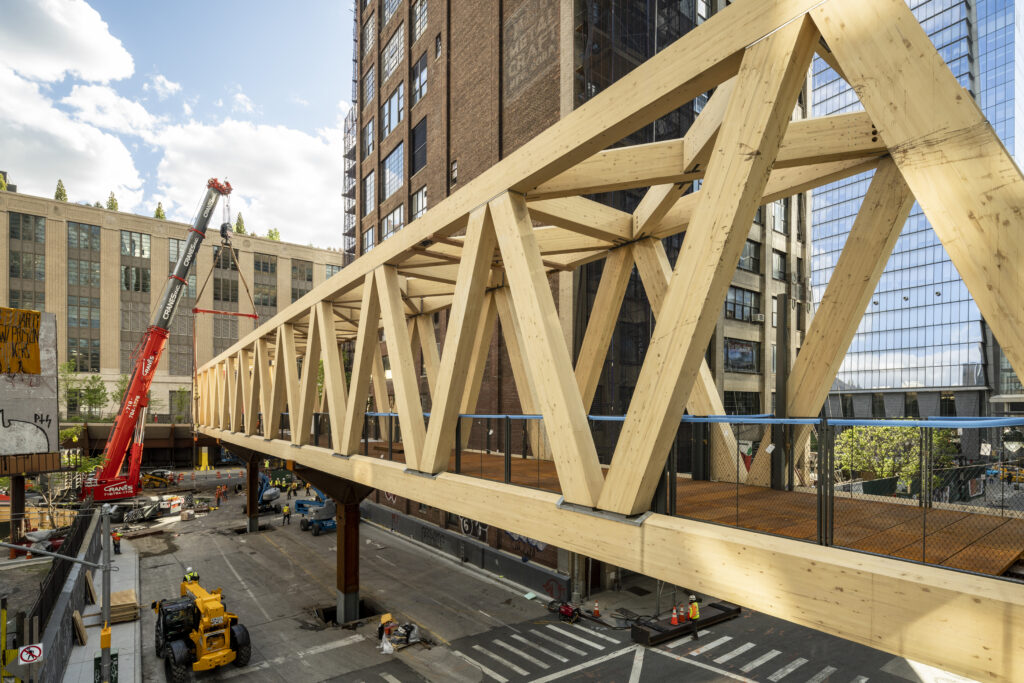SLB Insights
Why a Diversified Demand Base Is Key to Lasting Demand for Wood Products
Why a Diversified Demand Base Is Key to Lasting Demand for Wood Products
Lumber demand from single-family home construction and remodeling is volatile—the last few years alone have seen major swings from the COVID pandemic in 2020 to high interest rates last year. To minimize the impact of that volatility on the wood products industry, the work of the Softwood Lumber Board to expand and diversify softwood lumber demand into commercial construction is significant.
The SLB continues to defend share of market in single-family and outdoor applications while pursuing new market opportunities in non-residential and multifamily construction. To maximize those opportunities, the SLB invests in Education, the American Wood Council, Think Wood, and WoodWorks to influence key decision makers for these building types and convert more projects to wood.
A strategy of engaging design and construction’s key decision makers
SLB’s Education initiatives focus on educating design and construction professionals on wood topics ranging from sustainable forestry to building codes, as well as expanding wood design instruction in postsecondary architecture and engineering programs. For example, the SLB funded three faculty workshops in 2023, training 52 faculty on how to integrate education about wood systems into their own academic programs. These investments help to inspire the next generation of design professionals to build with wood.

The American Wood Council is the industry’s program for the development of codes, standards and regulations, design tools, and guidelines for wood construction. By identifying obstacles to wood specification and opportunities where new design standards would expand the market, the AWC can provide research and expertise to ensure codes and standards remain favorable to wood. The AWC has helped to integrate tall mass timber code provisions into building codes in 28 states including, most recently, Ohio, where the AWC was a regular participant in the Ohio Building Codes Committee meetings supporting the development of the approved code package.

WoodWorks supports and influences wood projects by working directly with design and construction teams, with the goal of facilitating a shift toward wood within firms. The program provides free one-on-one project assistance on commercial and multifamily wood building design, with WoodWorks design professionals serving as trusted assets to minimize the learning curve on unfamiliar designs or overcome hurdles with local building authorities. WoodWorks also hosts events educational events that help build relationships with design professionals. For example, WoodWorks hosted or spoke at 129 events in 2023 featuring innovative light-frame topics that attracted a total of 13,143 attendees, propelling the program to a total of nearly 80,000 education hours.
Think Wood is a marketing and communications program that builds interest and intent to specify wood in those audiences, and it has evolved in recent years to become a sought-after educational resource for the design and construction industry. Design and construction are fields where innovation involves “early bird” risk, so professionals need reassuring examples of successful wood projects that inform and demystify building with wood. For example, retail giant Amazon’s new headquarters in Arlington, Virginia, was covered by major media outlets like Bloomberg, Fortune, and the Washington Post—but those articles overlooked the project’s use of wood. Think Wood filled the gap to show how the architect used cross-laminated timber and glulam to create a warm, appealing space for employees that was also quicker to construct.

Think Wood featured a project profile of Amazon’s HQ2, which includes an event center built with cross-laminated timber and glulam. Photo credit: Magda Biernat.
What does it take to change a market?
Coordination between these programs and with other industry partners can move markets to embrace wood. In New York City, for example, the SLB is supporting an accelerator program called the NYC Mass Timber Studio that will help increase the use of wood products in the city with the goal of reducing the embodied carbon in new construction. The project is a collaboration with the New York City Economic Development Corporation, and it uses matching funds from the USDA Forest Service’s Wood Innovations Grants and other organizations, leveraging the impact of the SLB’s $50,000 investment in a $500,000 overall project that includes another accelerator in Atlanta.
The accelerator also builds on the efforts of each of the SLB’s programs in New York City, where mass timber is now beginning to break through. Think Wood has featured projects such as the High Line–Moynihan Connector, a mass timber bridge from architecture firm Skidmore, Owings & Merrill that demonstrates the potential for wood products in new construction types. WoodWorks has provided technical assistance on projects such as 320 & 360 Wythe Ave., a ground-breaking, 117,000-square-foot mixed-use project in Brooklyn that used nail-laminated timber floor systems and glulam columns and beams. And the city cleared the way for more mass timber projects by approving the use of CLT for buildings up to 85 feet tall in 2021.

The SLB-supported NYC Mass Timber Studio builds on the efforts of the SLB’s funded programs in New York City, including Think Wood’s profile of the High Line–Moynihan Connector from architecture firm Skidmore, Owings & Merrill.
Building on success
Industry veterans have much to be excited about when they consider the evolving wood products market. There’s a striking degree of consensus among designers, builders, owners, governments, and environmental professionals who consider wood viable—even critical—for building more economically and sustainably. Trade and mainstream coverage about wood is positive and enthusiastic, and project teams are eager to build more projects and taller projects with wood. Warehouses and offices are being designed to showcase their wood interiors to lure back workers with more appealing environments.

To make the most of this opportunity, our industry is investing in its own operations and in the SLB. The SLB’s investments have generated 12.6 billion board feet of incremental lumber demand since inception. That amount of lumber represents an equivalent of 32.3 million metric tons of avoided and sequestered carbon—an important secondary benefit for the sustainable building community and some governments. With industry’s steady support, the SLB will continue to create a diverse, growing demand base for wood products in the years ahead—a future that holds an incremental opportunity of 3.39 billion board feet through 2035.

